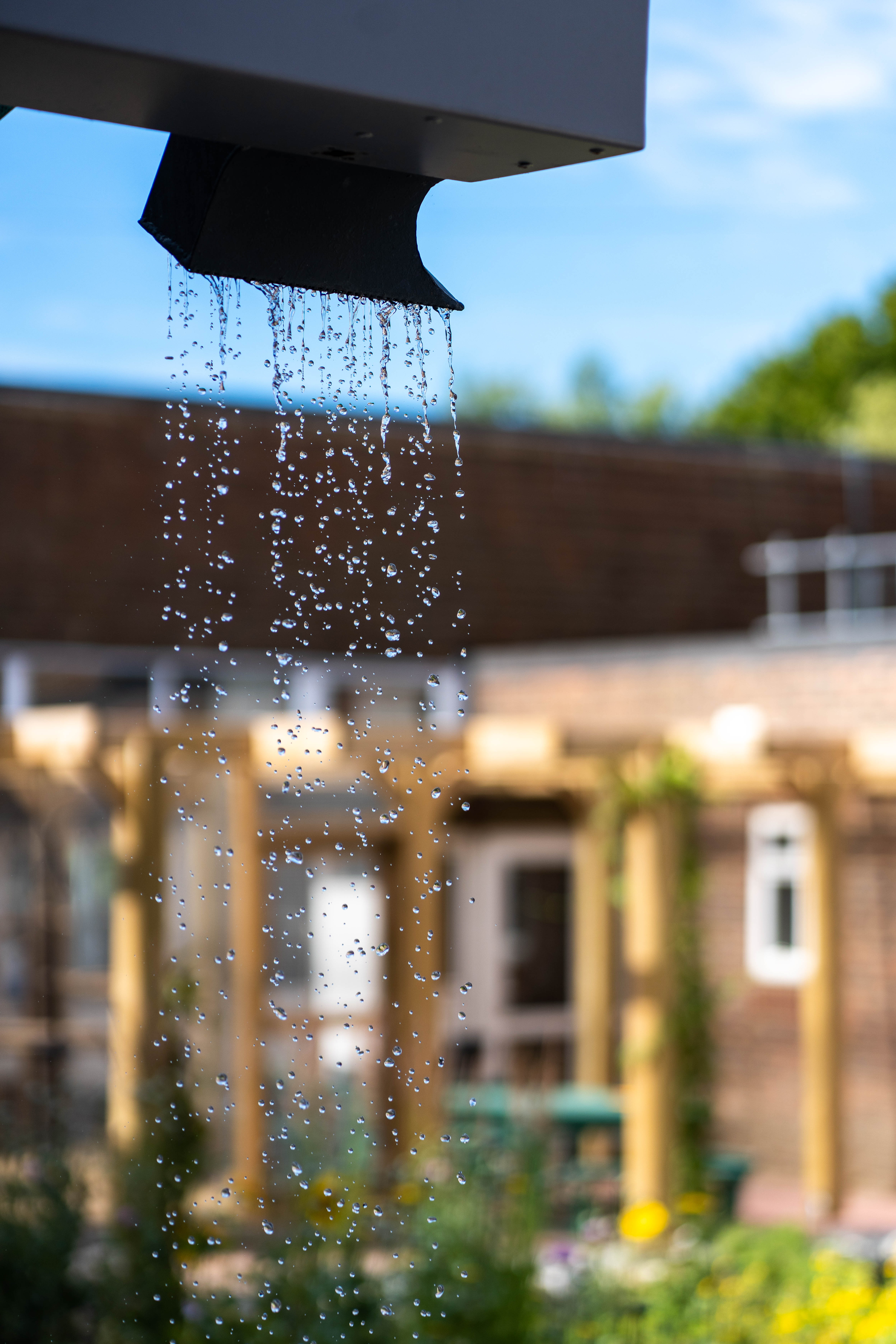
Today, we’re diving into aquifers, soil moisture deficit, SuDS, and rainfall recharge.
The aquifer is where we get all of our water from, available to us at the turn of a tap. When we use water, we take it directly out of the aquifer, so things like agriculture or even making a cup of tea pull water out of the chalk. Now to refill the water, aka aquifer, we need to soak it just like a sponge!
Rainfall plays a crucial role in recharging (refilling) the aquifer. Our region has chalky soils, which are highly porous and permeable, that allow water to move through them quickly and efficiently. When rainwater falls on the chalky soil, it infiltrates the ground, making its way through the chalk layer, which acts like a natural sponge, soaking up the moisture. This recharges the aquifer, providing us with water for the future.
Unfortunately, it’s hard for rainfall to soak into the ground in urban spaces; that’s where Sustainable Drainage Systems (SuDS), or rainscapes as we call them, come in. These nature-based solutions are designed to manage surface water runoff, particularly in urban areas where traditional drainage systems struggle to handle heavy rainfall. Chalky soils, with their high porosity and permeability, are perfect for constructing rainscapes because they can store and transmit water efficiently. By managing surface water, rainscapes help protect important groundwater resources like the aquifer. They use features like swales, ponds, permeable pavement, and rain planters to direct and clean up surface water. Slowing it down and soaking it up!
SuDS are becoming more widespread as communities recognise the benefits for both urban environments and water resources. TAP is working to make SuDS an integral part of everyday life for those in Brighton, Hove, and Lewes. Projects like the Wild Park Rainscape showcase how SuDS can be effectively implemented in local communities.
It’s not just rainfall that impacts the aquifer. The Environment Agency report on the Solent and South Downs (SSD) reveals how February was exceptionally dry, with only 12% of the average rainfall, but March surprised everyone with a whopping 220% of the average precipitation. This change in rainfall impacted soil moisture.
Wait, why does soil moisture matter? Well, soil moisture deficit is a term used to describe when there’s less water in the soil than usually expected for a particular time of year. When there’s a high soil moisture deficit, the ground is very dry, and as heavy rainfall occurs, the soil may not absorb all the water quickly, leading to surface water runoff. As a result, the rain hits the dry soil and washes off the surface rather than soaking in; rainscapes can combat some of this by slowing down the flow, allowing rainfall to soak into the ground.
So, what causes soil moisture deficit? A lack of rainfall, high evaporation rates, or both can lead to thirsty soil. There are some ways to combat a high soil moisture deficit, like using regenerative agriculture. For example, the people at Saddlescombe Farm keep a diverse array of grass; this diversity reduces evaporation as each patch evaporates at different rates. This protects the soils from having a high moisture deficit, contributing to a healthier soil that supports a healthier aquifer.
Luckily, the abundant rains in March saturated the soil, making it wetter than average and allowing water to infiltrate the chalky soil, restoring our groundwater level to average. This fluctuation demonstrates the importance of understanding how rainfall affects soil moisture, which, in turn, plays a crucial role in our water recharge.
Understanding the relationships between rainfall, soil, and the aquifer we rely on is essential. It can help us make more sustainable decisions like creating rain gardens, adjusting our water use, or just chatting about the aquifer. We all rely on the aquifer and can work together to keep our vital groundwater water resources healthy for generations to come.





 Chrome
Chrome
 FireFox
FireFox
 Edge
Edge